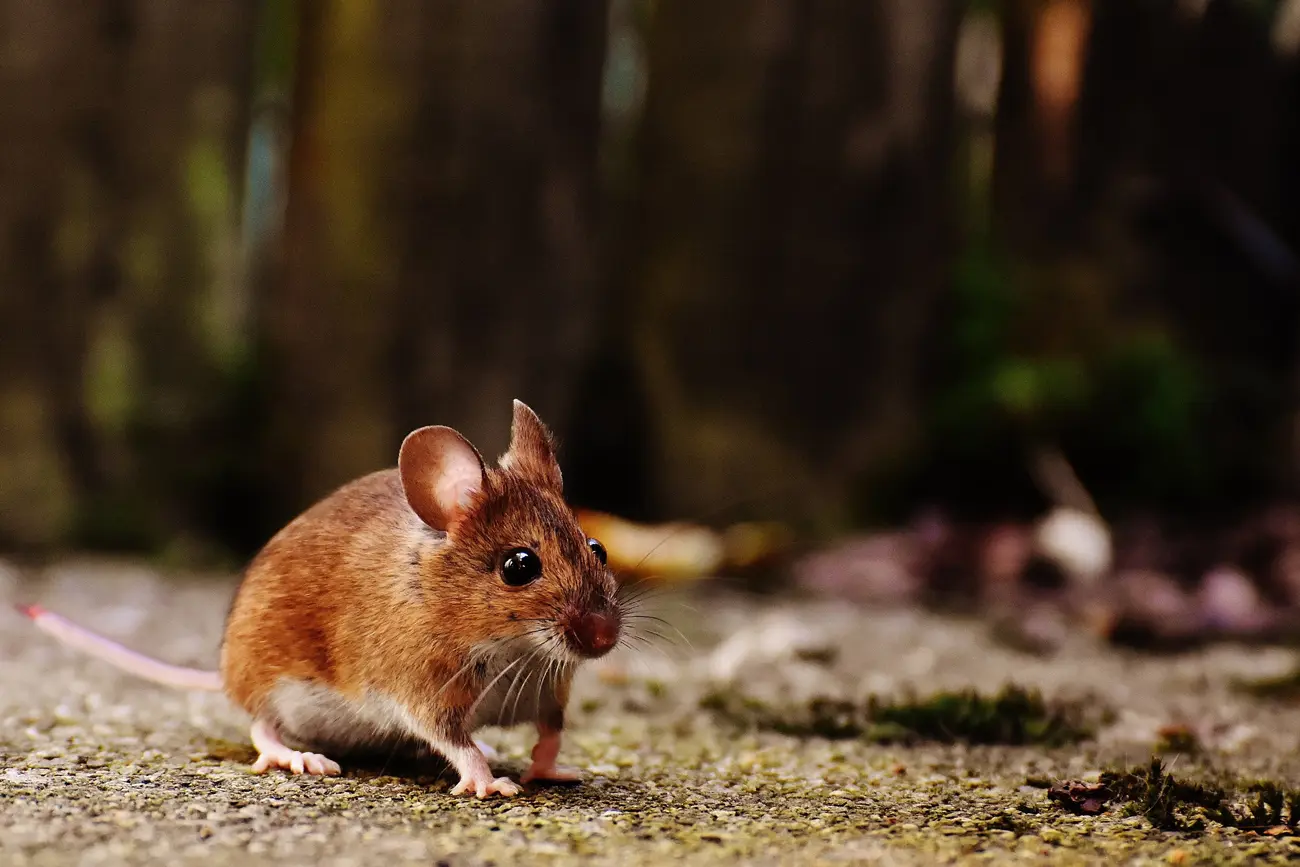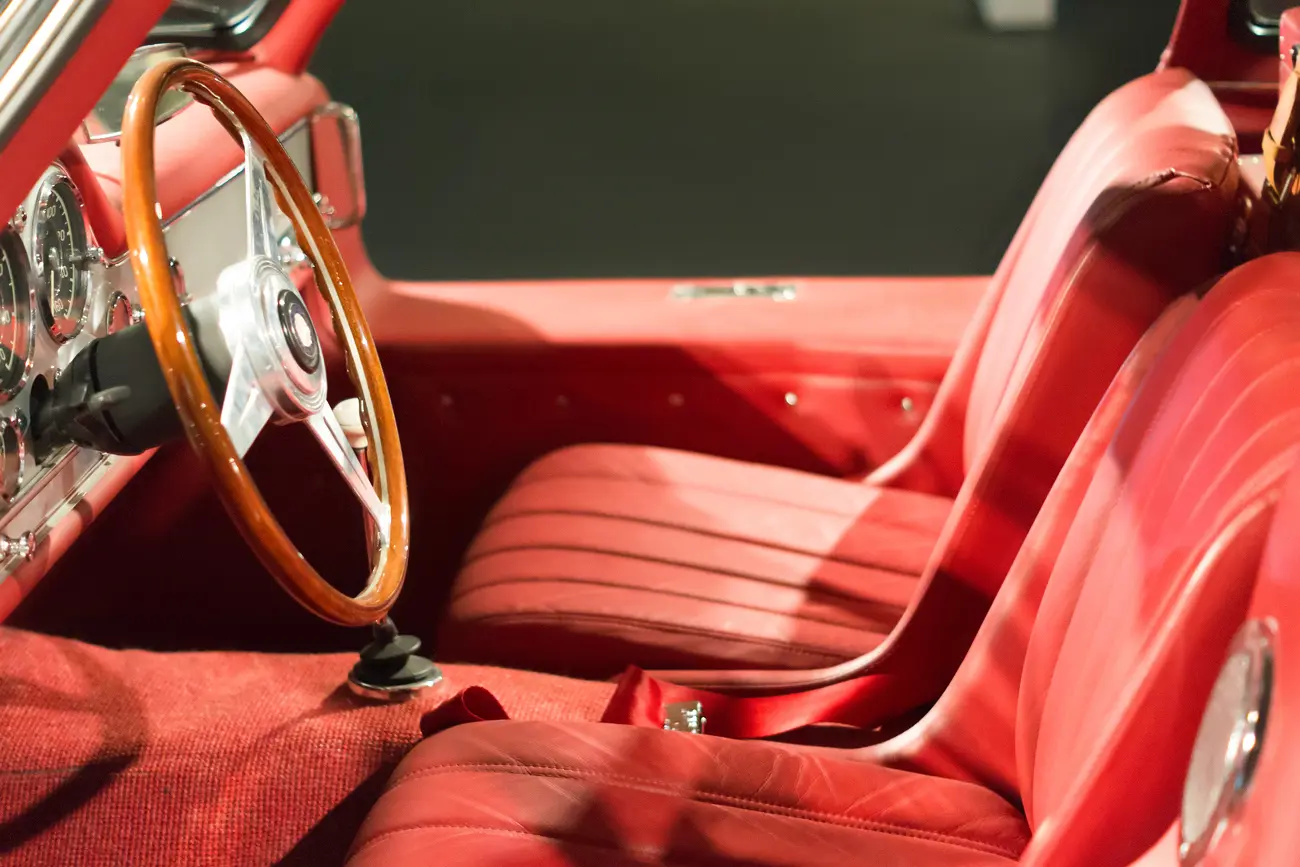How to keep mice and rats out of your classic car
29 June 2021

As classic car enthusiasts, we’re usually delighted when we spot a fellow fan of vintage vehicles. But when those fans are of the furry variety, and they’re sinking their sharp teeth into our original leather seats, then it’s outright war!
Rodents love hiding and nesting in cars – particularly vehicles that are driven rarely or are in storage. Mice and rats also enjoy having a good old chew of cables and upholstery, causing costly damage, and even presenting a serious safety hazard.
So, if you find you’ve got a mini passenger in your Mini Cooper, what action can you take? We’ve put together our top tips for ridding your Riley of rodents – and prevent them from sneaking back.
Remember: rodents are by no means the only problem that can be set your beloved vehicle, so make sure you’re covered with suitable classic auto insurance.
How can rodents damage your vehicle?
Classic car owners take meticulous care in restoring vehicles to their former glory. But all those months of hard work can be laid to waste in the blink of a beady eye if you get a nest of rodents in your engine.
The biggest danger is that they’ll chew up your wiring – and that you won’t notice until you’re on the road. If your electrics short, that’s a serious hazard. And if systems such as power steering fail, that can cause an accident.
Less dangerous, but hugely irritating, is that they can tear up any soft materials to create their nests.
Seat covers are the most obvious material, but air filters look like lovely fluffy bedding material to a nesting rodent. That means air won’t be properly filtered before going into your engine, which can damage it and reduce its lifespan.
Rodents are even known to chew their way through plastic panels to create a well-hidden and insulated home behind your dashboard or in your doors.
Then there’s mess and smell from nesting and bedding materials, animal urine and excrement. It’s deeply unpleasant – and, worse, can lead to airborne bacteria that could make you sick.
And finally, dead, and rotting rodents – do we really need to say any more? This is a problem you really want to avoid!
Keeping rodents out of your vehicle
Prevention is always better than cure. So how can you stop rats and mice making your Delorean their des res?
-
Store your car carefully
Rodents are most likely to find their way into your nice, warm garage and vehicle during the colder months.
And that could be just the time when you put your car into storage, protecting it from the elements until rallies and shows start up again in the spring. When you come to give your pride and joy a good spring clean, you could find a nest of mice scampering for cover!
So, when storing your car before the winter, think rodents! Suggestions you could try include: taping up the pipes; lowering visors (yes, mice love to nest there!); not covering your vehicle (which creates more hiding places); and even raising it on jacks.
Check it on a regular basis throughout the time it’s stored, looking out for warning signs – we’ve included some below.
Remember: mice and rats aren’t the only intruders you need to beware of. Make sure you’ve got classic motor insurance to cover your investment for theft, too. If you’re restoring an old beauty, laid-up cover is available from Lancaster for up to six months.
-
Eliminate food sources
Rodents aren’t just looking for a bed – they want breakfast, lunch, and dinner, too. They’ll be attracted to any leftover food, particularly in winter when other sources of nourishment are scarce.
So, if you’ve accidentally spilled a snack in your vehicle, left a bag of dog kibble in the boot, or dropped sandwich crumbs on the floor, you’re basically inviting your local wildlife round for dinner in your car.
They prefer chocolate to cheese and only need a smidgen, so take care with any chocolate bar wrappers. If you eat in your car, give it a good vacuum on a regular basis to suck up every tasty morsel.
And don’t forget: rodents won’t be remotely deterred by cardboard, plastic, or paper packaging. If you must keep food in your vehicle, put it in metal containers.
-
Plug any gaps
Can you work out where rodents are entering your vehicle? If you’re restoring an old banger, there may be several holes in the bodywork, and you should repair these as quickly as possible.
Rodent teeth can make mincemeat of many filler substances, so try using steel wool to block any holes until you can manage a proper repair.
However, it’s not possible to block up certain entry points, which include air vents, pipes, and open wheel wells. And bear in mind that mice can squeeze through a hole the size of a pencil, and young rats aren’t much bigger.
There could be dozens of doorways into your vehicle, and rats and mice will saunter straight in and take up residence.
-
Clear the clutter
Is your car a rubbish bin on wheels? Or is your garage or workshop a hoarder’s cave? If so, then you’re creating a dream home for the rodent population.
Rats and mice like to hide: it makes them feel secure enough to nest. And once they’ve nested, your rodent problem will explode in size in double-quick time.
So, clear out any cardboard boxes, old clothes, and any other rubbish from your vehicle. Keep your garage as free from clutter as possible: even though you might not mind a mice nest under your shelving units, those rodents could soon have their beady eyes on your classic.
Of course, most owners treasure their older vehicles and keep them in mint condition, which is one reason why insurance for a classic car is often lower than for modern motors. But even a discarded jumper could become a mouse magnet.

-
Let in light
An animal that loves to hide is one that loves the dark. Gloomy corners are as desirable to a rat as a penthouse suite is to a human!
So, if your car is kept in a garage, you can leave the light on to deter rodents. Some owners even recommend leaving the bonnet open, too: that way, rodents aren’t tempted to nest in your engine as it won’t be dark and cosy enough for them.
Of course, leaving the bonnet open does run the risk of making it easier for rodents to get inside in the first place. But as they’re more likely to climb up underneath your car anyway, it could be a wise move.
-
Try electronic repellents
There are various devices on the market that promise to deter mice and rats through vibrational disruptions, ultrasonic waves, or even flashing lights. Some plug into the mains in your garage, others are solar powered, while many are battery operated.
Are they effective? The jury’s still out, sadly. Some owners swear by them, others are more sceptical.
But they’re cheap, easily available, and harmless to humans, so if you know you’ve got a rodent problem nearby, these could be worth a punt.
-
Use repellent smells
Sometimes, though, the more traditional methods are what you need. After all, people have been living side-by-side with rodents forever, so our ancestors were pretty clued-up when it came to pest control.
Rodents have highly sensitive noses, meaning that repellent smells can work a treat. And fortunately, the smells that disgust these little critters are sometimes those that delight us.
Peppermint is one fragrance that rodents are thought to detest, so buy some peppermint oil and sprinkle it around any rat runs or likely hiding places. Laundry dryer sheets and certain soaps are also well worth trying.
Less pleasant for humans are the smells of mothballs and cayenne pepper. Still, they’re better than the scent of a dead rat rotting under the driver’s seat!
-
Drive your car
You’ll need no encouragement to try out this top tip! Driving your car on a regular basis can scare off rodents at the point when they’re just scouting around for somewhere to set up home. There’s nothing like a revving engine to send them packing before they’ve settled in.
Hopefully, you’ll shift the rodent problem before they can inflict any damage, thus saving your treasured Triumph from a rat attack.
Of course, as well as protecting your car from rodents, you need to protect it from other hazards such as accidents, fire and theft through classic car cover.

Eliminating rodents from your classic car
But what if your rodent intruders have already made themselves at home?
If your Beetle’s infested by pests, it’s vital that you take action fast. A female mouse produces five-10 litters in a year, each with five or six babies. Those young grow up fast, and can breed at the age of 30 days.
That means that your priceless Porsche could be turned into a mouse-mobile within a matter of months.
So here are our top four tips for banishing critters from your vehicle.
-
Spot the warning signs
Mice are brilliant at hiding – but careless at covering their tracks. So you might well notice droppings, claw or tooth marks, or torn up cloth or paper before you catch sight of an actual mouse. You could catch a whiff of their urine, too.
Don’t delay: find those culprits now!
-
Set traps
Traps are the most obvious solution, and usually very effective. Set them up near any nest, on tyres, or near entry points, and try peanut butter as a bait.
Snap traps are the simplest form, and usually kill the animal instantly. Electric traps, which zap the rodent to death, are an option for those too squeamish for snap traps. Some people use glue strips, but many consider them cruel.
You can also buy humane traps which keep the animal unharmed in a tube until you release it into the wild. But critics think this is distressing for the mouse – and many rodents simply find their way back to your lovely, warm car!
-
Use poison
It’s very tempting to use poison – but think carefully. It won’t just kill your unwelcome visitors, but also any predators that eat them, harming wildlife in your area. And if rodents crawl away into the depths of your car to die, the stench will be unbearable.
If you decide that poison is your best option, then take the utmost care around pets and children.
Fortunately, vintage vehicle drivers do tend to proceed with caution when it comes to motoring, helping to keep themselves and other road users safe and driving down the cost of classic car insurance.
-
Get a cat
Finally, here’s another old favourite: enlist your pet cat to solve the problem the feline way. Many cats love the opportunity to unleash their instincts and their claws!
Of course, while your cat might well be a lean, keen killing machine when it comes to rodents, this solution is not without its drawbacks.
For a start, some cats actually bring in mice to homes and garages, adding to your existing problem. And feline teeth and claws can do even more damage than rodent ones to your upholstery!
A less risky option is simply to put clumps of cat hair in strategic places around your car; the smell alone may be enough to cause your intruders to scurry away.

Get a quote from Lancaster today
At Lancaster, we’ve got over 35 years’ experience in the classic car world, arranging cover for everything from mouse-ridden old Mazdas to pristine prestige vehicles.
We work with selected underwriters to find you bespoke classic car insurance to suit your vehicle, your budget, and your usage. Whether you want cover for static shows and historic rallies, or for an EU trip of up to 90 days, we can arrange policies to suit.
Discounts for car club members and limited mileage are available. Plus, managing your policy is simple thanks to our UK-based call centre.
Get a quote today.
Policy benefits, features and discounts offered may very between insurance schemes or cover selected and are subject to underwriting criteria. Information contained within this article is accurate at the time of publishing but may be subject to change.
